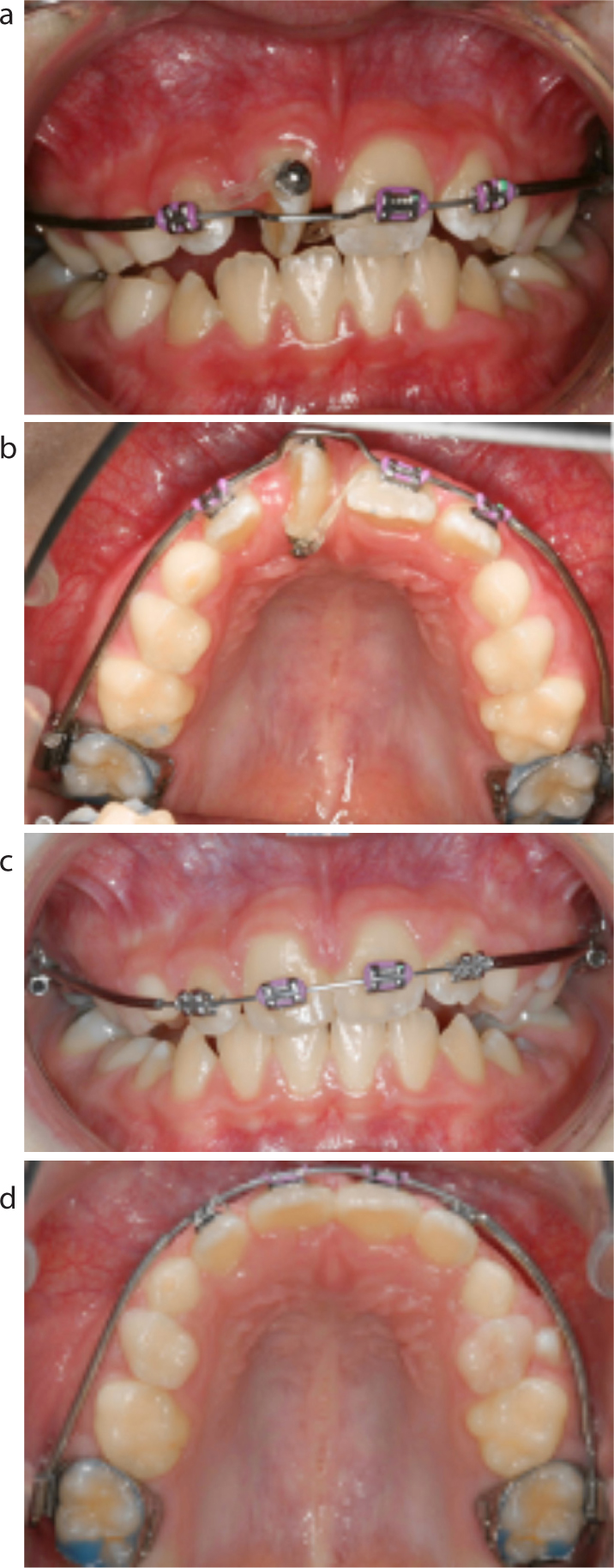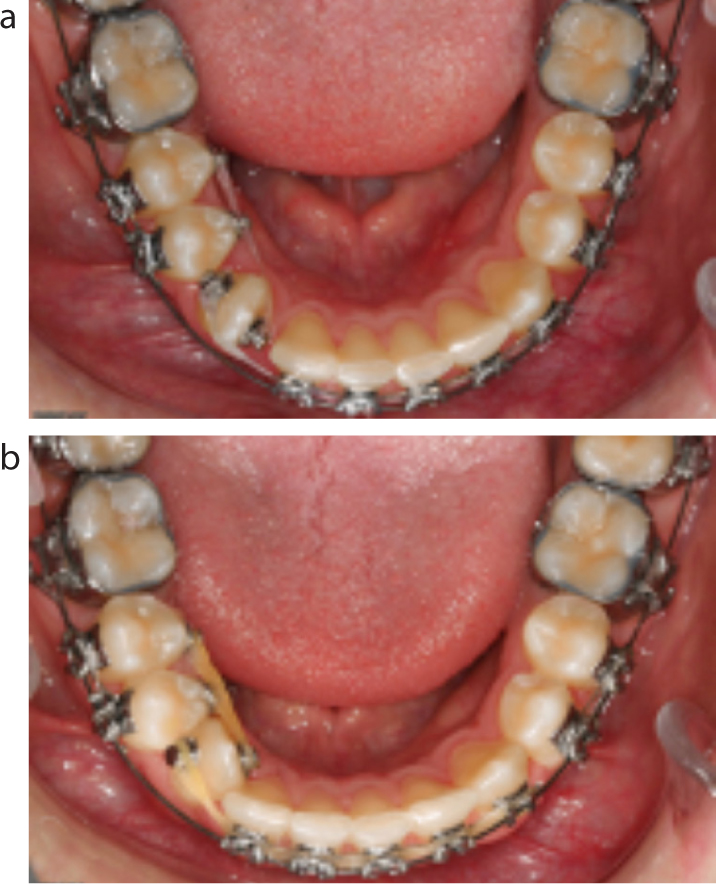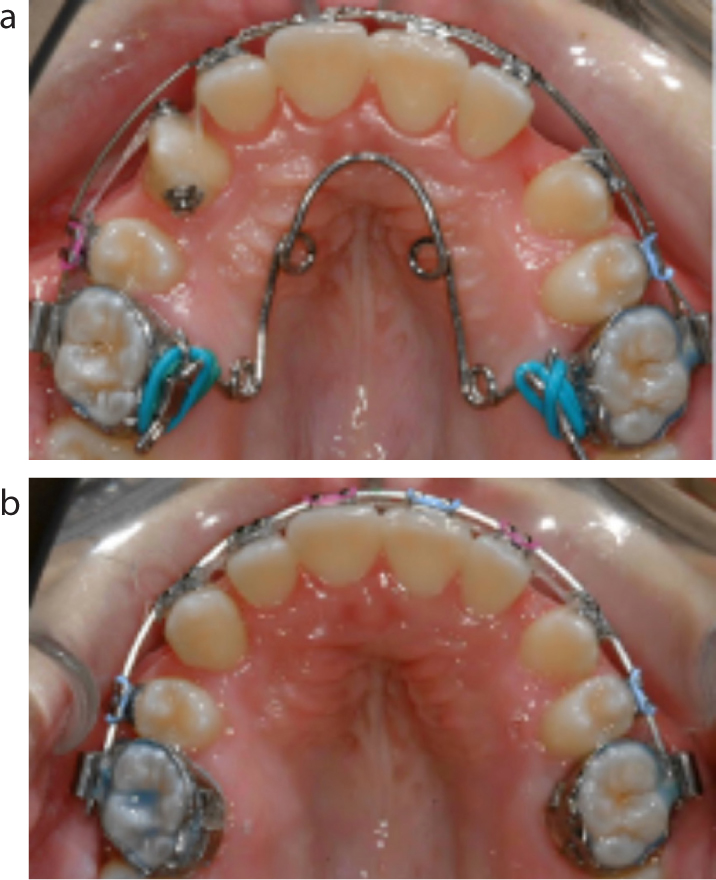Article
Correction of severely rotated teeth poses a difficult challenge to orthodontists. A myriad of techniques to correct rotated teeth have been documented in the literature. Fixed appliances are the routine treatment for severely rotated maxillary incisors. The use of a fixed appliance and box loop fixed in the molar auxiliary tube, premolars and canine bracket was reported to correct a lower canine.1 Anterior single-tooth rotations can be corrected using rotating springs2 or a Whip appliance.3 Although rotation of posterior teeth poses even further challenges, the use of a transpalatal arch for rotation of first molars has been used now for many decades.4,5 Auxiliaries such as rotational wedges and ligatures are available and the use of custom-made rotational ligatures is also possible.6
Clinical tip
By placing buttons on the opposite surfaces of a rotated anterior tooth (Figure 1a) and attaching the buttons with powerchain (Figure 1b) to the adjacent teeth attachments, a rotated tooth can be efficiently realigned (Figure 1c,d). This treatment creates a force couple, with two equal forces opposite in direction, delivering an effective force to the crown that enables the root to rotate rapidly in the bone. This technique therefore allows ideal bracket positioning to be achieved in a short time period, with less chairside time needed than alternative techniques tying and retying various dimensions of flexible wires.

The technique can be shown to derotate teeth over a short treatment duration and provide good results. Figure 1 shows how, over 5 months, an incisor was successfully derotated 100°, to be aligned in the upper arch. A lower canine was derotated about 70° over 4 months using this technique (Figure 2a,b) and an upper canine derotated approximately 135° in the same time period, with the efficient use of this force couple (Figure 3a,b).


